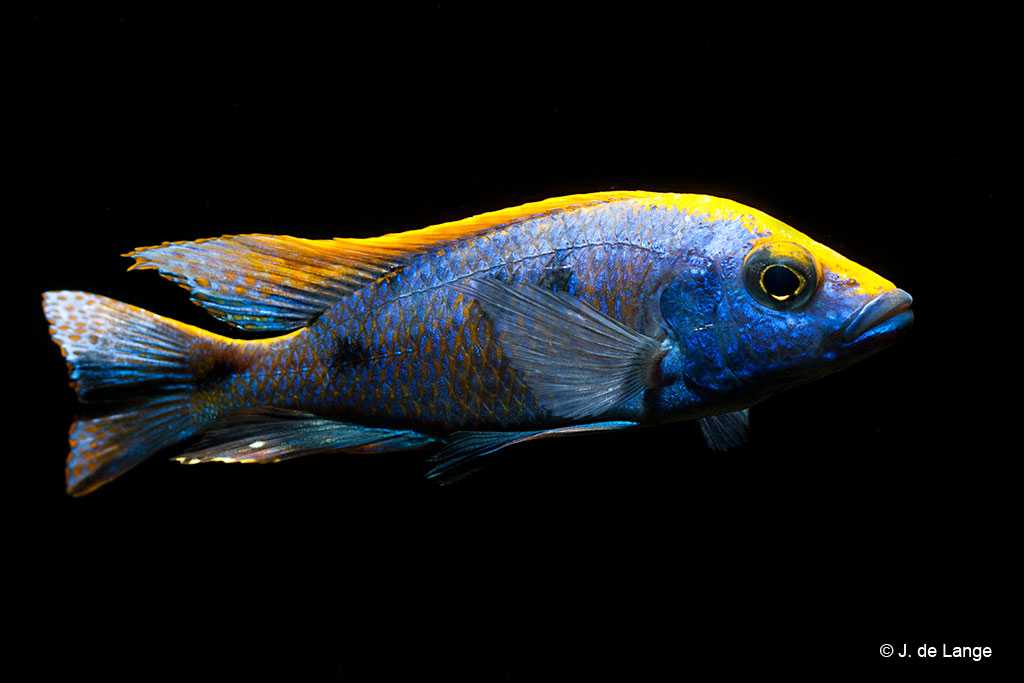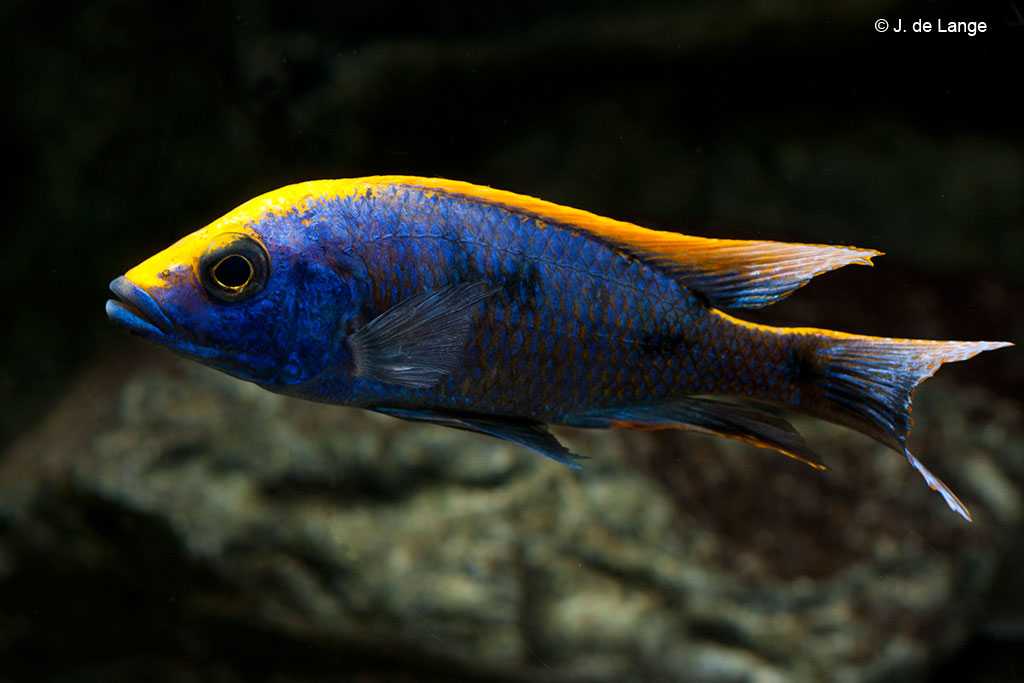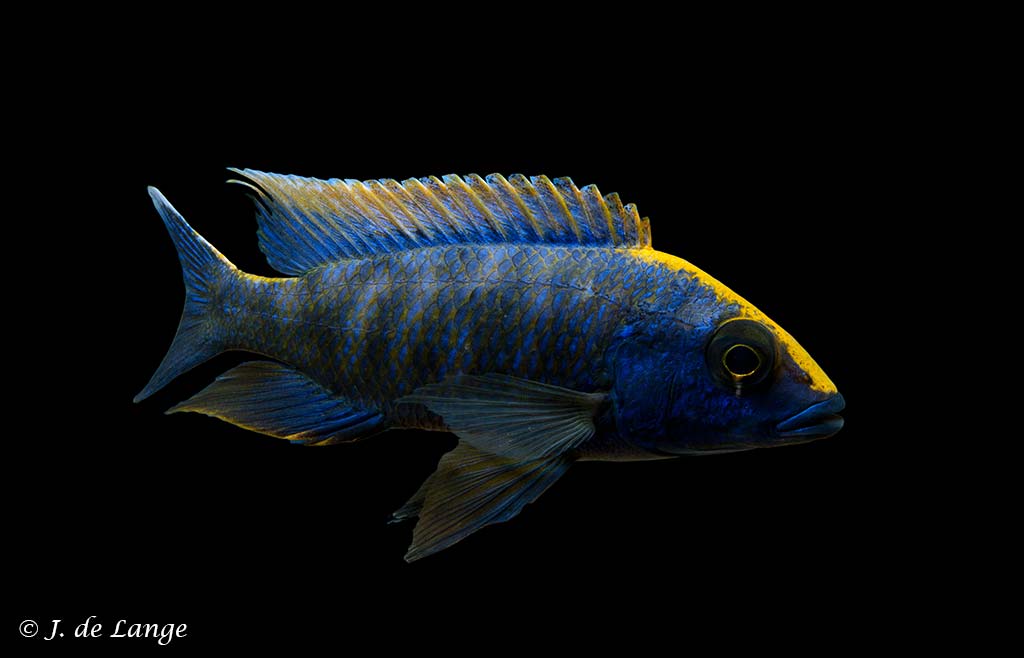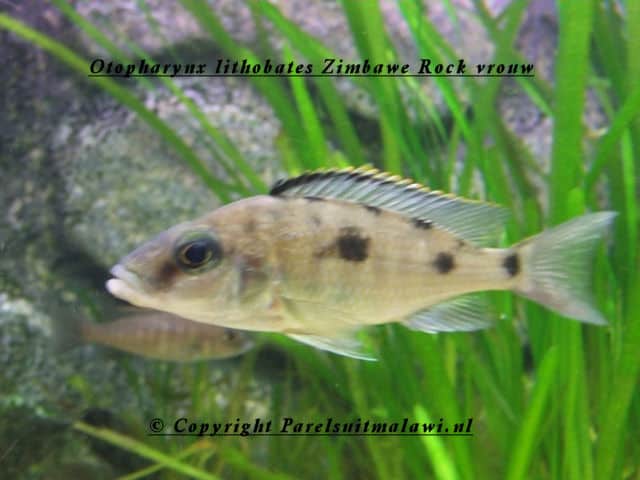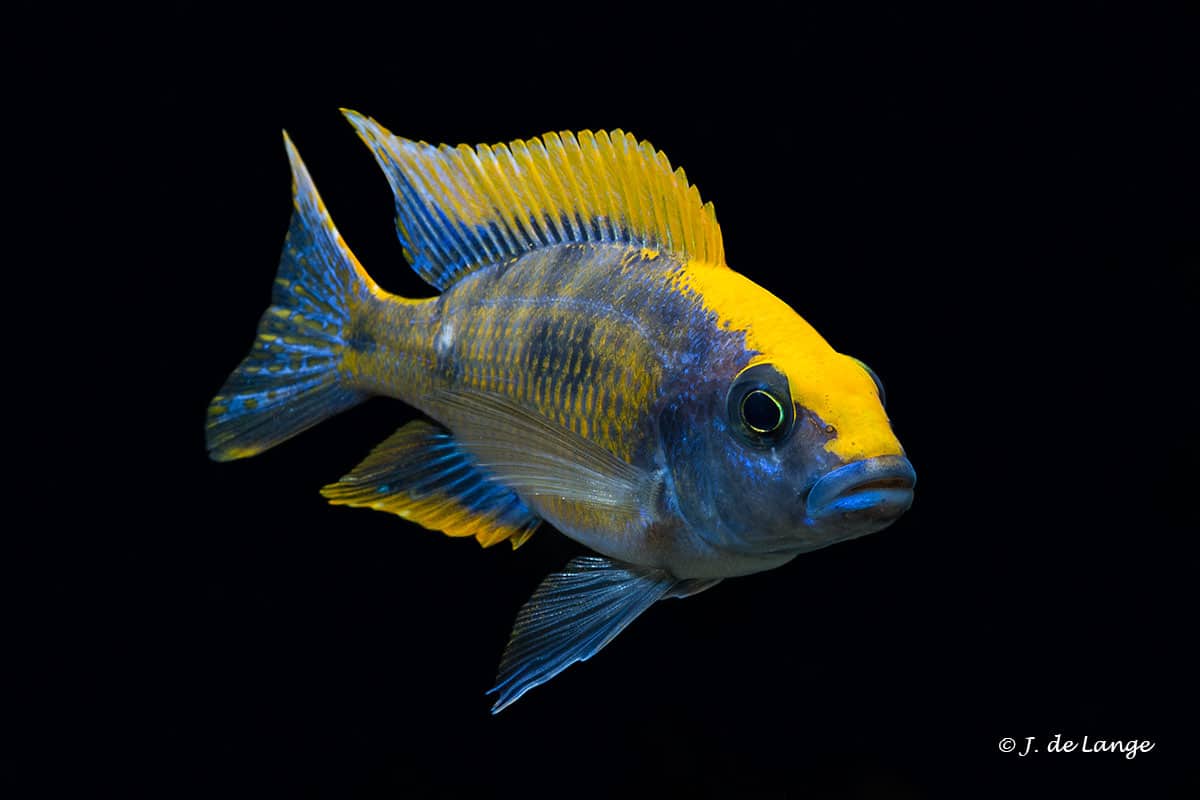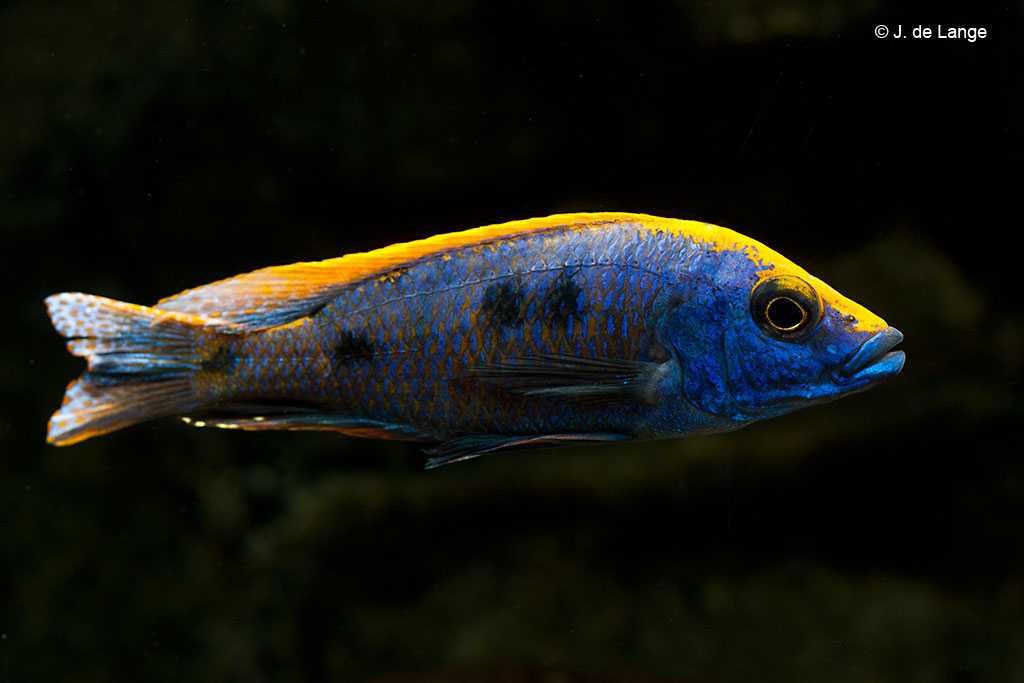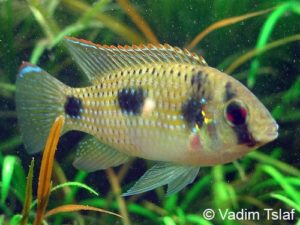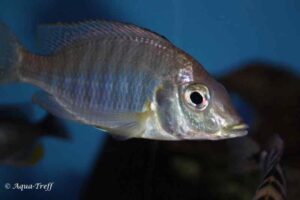Otopharynx lithobates – Zimbawe Rock
The male of the Otopharynx lithobates can reach a length of about 17 centimeters, the female reaches about 15 centimeters. This fish has a beautiful bright blue color, there is a bright yellow stripe from the a23> beak to the end of the tail. The females remain gray-brown and have sometimes also a yellow stripe.

There is also a cultivated variant of this species, the Otopharynx lithobates “Black Orange.” This variant originates from Germany. Its body has a very dark color that contrasts beautifully with the orange crest on its head and dorsal fin.
Origin
Zimbawe Rock, Lake Malawi.
The Aquarium
Otopharynx lithobates requires an aquarium of at least 1.50 meters. Furnish the aquarium with hard plants such as Vallisneria and Anubias, many rock formations so that caves are created, the bottom must consist of sand. Also make sure there is plenty of free swimming space. It is advisable to change the water regularly.
Water parameters
Temperature: 24-27 degrees Celsius
PH: 8
GH: 12-16
Diet
Both live food and frozen food can be given as food, such as white mosquito larvae, brine shrimp, krill, shrimp and mussels. Also, vegetable food such as spirulina can be given, also cichlid sticks, granulate and dry food.
Character
The Otopharynx lithobates is a fairly peaceful fish towards its fellow inhabitants, only in an aquarium that is too small it can become aggressive. This African cichlid can be kept as a couple, if the male chases the female a lot you can add several females. They can be kept together with other Malawi cichlids.
Breeding of the Otopharynx lithobates – Zimbawe Rock
Breeding Otopharynx lithobates is fairly simple. Up to 60 eggs are laid in a hollow and fertilized, after which they are taken into the female’s mouth. The male defends the territory. After about 3 weeks, the young are released and can be raised on artemia nauplii, fry food, or finely ground dry food.
Author
Coby
Copyright images
Coby
J. de Lange
